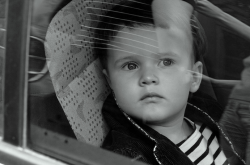
— Parents are busy and it's easy to forget something during a trip to the grocery store.
For those parents who are so busy they believe they might leave their child in a steaming hot vehicle, it's probably not a good idea to depend on technology to take the place of your memory.
The National Highway Traffic Safety Administration (NHTSA) and The Children's Hospital of Philadelphia have released the results of a new study on products intended to prevent a child from being left behind in a hot vehicle.
The study found that currently available products are limited in their effectiveness and are unreliable as a preventative measure for preventing child heatstroke tragedies.
"With summer temperatures hitting record highs around the country, child heatstroke is clearly an issue of national concern," said U.S. Transportation Secretary Ray LaHood. "Public education is the best way to help parents and caregivers prevent tragic accidents and keep their children safe."
Heatstroke is the leading cause of non-crash, vehicle-related deaths for children under the age of 14.
The government commissioned Children's Hospital to evaluate a number of products that connect to child restraints and are advertised to help parents and caregivers remember children who they may have unintentionally left behind in a parked vehicle.
The results showed that our dependence on technology shouldn't apply to reminders about leaving a child in a vehicle.
Researchers said that numerous limitations were apparent, including inconsistencies in arming sensitivity; variations in warning signal distance; potential interference with the devices' notification signals from other electronic devices; susceptibility of the systems to misuse scenarios involving spilled liquid beverages; and disarming of the devices due to a slumping or otherwise out-of-position child.
In addition, many of the products required extensive efforts by parents to set-up, monitor, and operate, which could give parents and caregivers using the devices a false sense of security.
The technologies would also not address the 20-40 percent of children who are killed when they gain access to the vehicle without an adult present or are not in child restraints, since the devices are child restraint based.
"Everything we know about child heatstroke in motor vehicles is that this can happen to anyone from any walk of life – and the majority of these cases are accidental tragedies that can strike even the most loving and conscientious parents," said NHTSA Administrator David L. Strickland.
"While many of these products are well intended, we cannot recommend parents and caregivers rely on technology to prevent these events from occurring."




